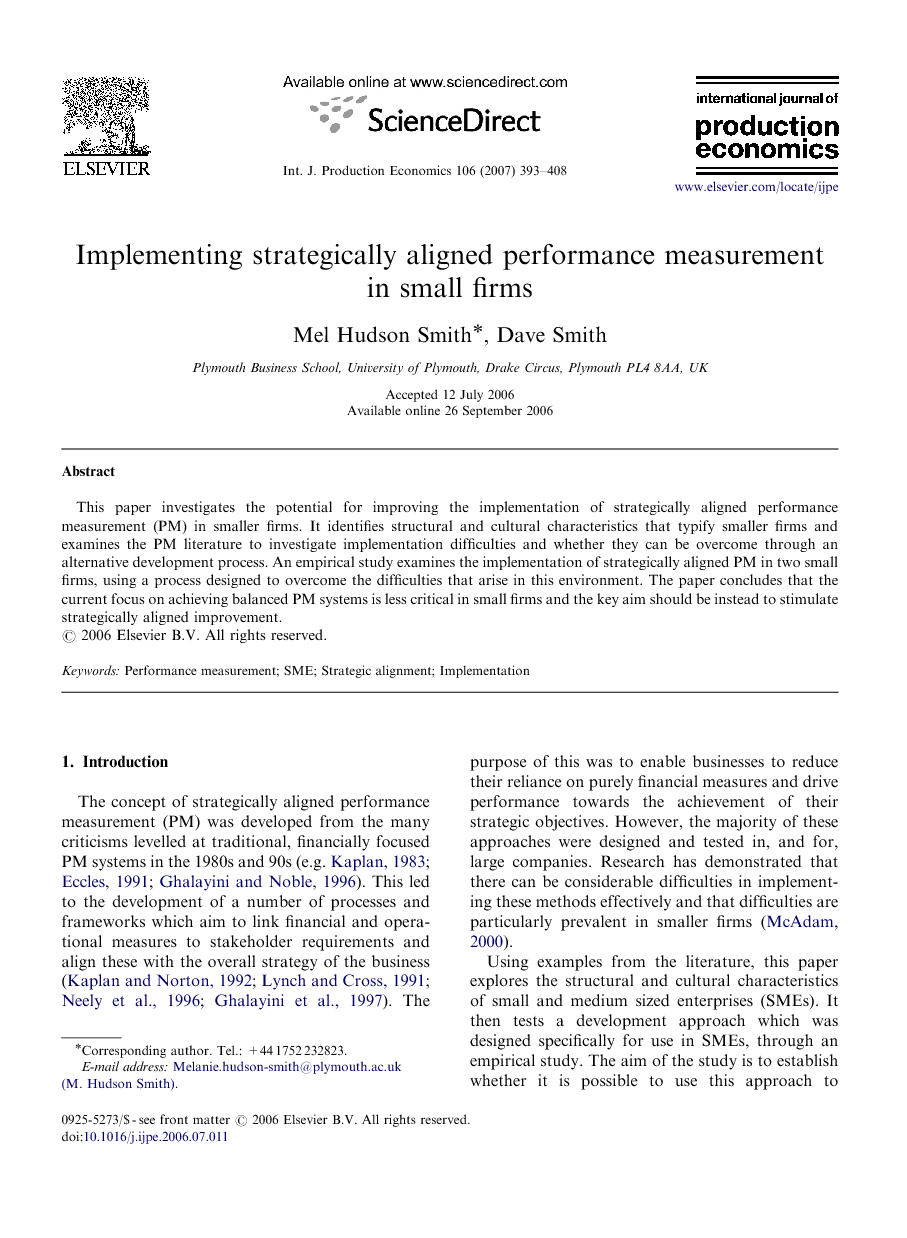ترجمه فارسی عنوان مقاله
پیاده سازی ارزیابی عملکرد استراتژیک هم تراز در شرکت های کوچک
عنوان انگلیسی
Implementing strategically aligned performance measurement in small firms
| کد مقاله | سال انتشار | تعداد صفحات مقاله انگلیسی |
|---|---|---|
| 16962 | 2007 | 16 صفحه PDF |
منبع

Publisher : Elsevier - Science Direct (الزویر - ساینس دایرکت)
Journal : International Journal of Production Economics, Volume 106, Issue 2, April 2007, Pages 393–408
ترجمه کلمات کلیدی
اندازه گیری عملکرد - شرکتهای کوچک و متوسط - هم ترازی استراتژیک - پیاده سازی
کلمات کلیدی انگلیسی
Performance measurement,SME,Strategic alignment,Implementation

